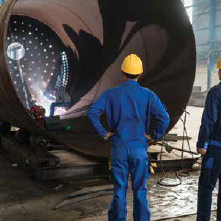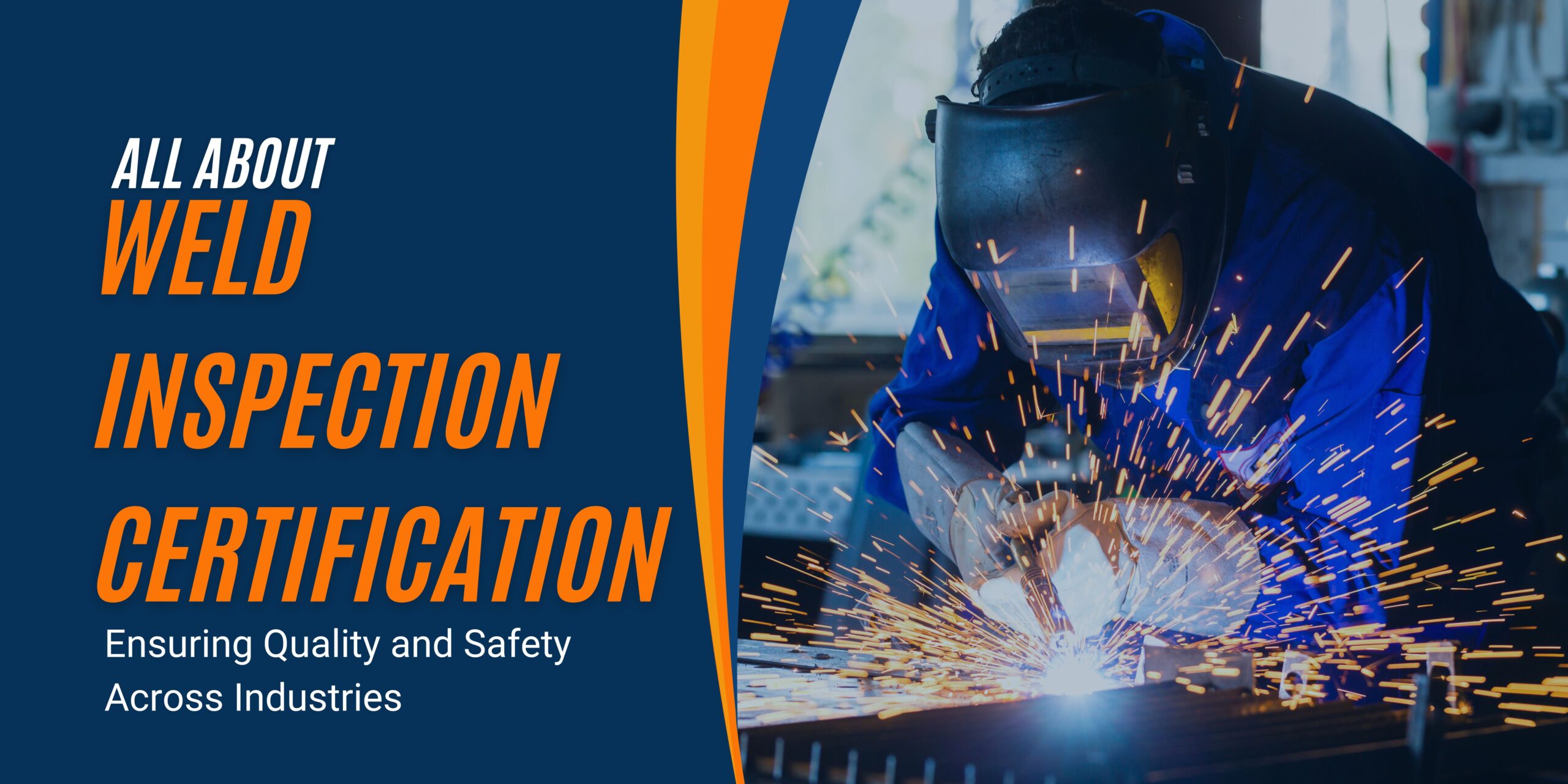The Ultimate Guide to Welding Inspection Racine for Industrial Standards
The Ultimate Guide to Welding Inspection Racine for Industrial Standards
Blog Article
Cutting-edge Methods to Fillet Weld Inspection and Screening: Enhancing Weld Quality and Compliance Standards
In the realm of welding, the quality and honesty of fillet welds play a crucial function in making sure the architectural strength and reliability of various industrial elements. With the constant drive for boosted effectiveness and compliance with rigorous criteria, the exploration of ingenious methods to fillet weld assessment and testing has actually ended up being imperative.
Advanced Non-Destructive Testing Approaches
Making use of cutting edge modern technologies, progressed non-destructive screening approaches play a crucial function in guaranteeing the integrity and top quality of fillet welds. These approaches, such as phased variety ultrasonic screening (PAUT) and magnetic fragment screening (MPT), offer in-depth insights into the weld's inner framework without causing any damages to the material. PAUT, for circumstances, utilizes numerous ultrasonic aspects to evaluate the weld from numerous angles, offering a thorough visualization of potential issues like absence of fusion or fractures.
Similarly, MPT is efficient in finding surface-breaking flaws by applying an electromagnetic field and iron fragments to the weld area. This approach is especially useful for recognizing stoppages that might jeopardize the weld's toughness. By utilizing these sophisticated non-destructive screening techniques, weld examiners can properly assess the top quality of fillet welds, guaranteeing conformity with sector standards and regulations. The capacity to find problems beforehand not only boosts weld top quality but likewise stops pricey rework or failings in architectural integrity, underscoring the importance of these ingenious testing strategies in welding inspections.
Robotics and Automation in Evaluation
The integration of robotics and automation has actually transformed the examination process for fillet welds, improving performance and precision in quality evaluation. Robotics supply specific control and repeatability in inspecting welds, making sure consistent and trusted results. Automated systems can be configured to follow specific examination courses, making certain extensive protection of welds and lowering the danger of human mistake.
Robotic assessment systems equipped with sophisticated sensing units can find and gauge weld attributes with high precision, offering thorough data for evaluation. These systems can determine issues such as cracks, lack of combination, and porosity, enabling prompt restorative activities to be taken. In addition, robotics and automation enable real-time information collection and evaluation, supplying prompt feedback to drivers and assisting in fast decision-making processes.
In addition, making use of robotics and automation in fillet weld inspection enhances overall efficiency by lowering assessment times and boosting assessment throughput. By simplifying the examination process, manufacturers can ensure weld quality and compliance requirements are satisfied successfully, eventually causing cost financial savings and enhanced product quality.
Using Expert System for Analysis
Expert system plays an essential duty in improving the efficiency and precision of evaluation in fillet weld inspection processes. By harnessing the power of AI, inspectors can simplify the analysis of weld quality and conformity criteria, resulting in much more trusted and accurate results. AI algorithms can rapidly refine large amounts of data from weld assessments, spotting problems or inconsistencies that may be testing to determine with the naked eye. This advanced technology makes it possible for real-time monitoring of weld quality, allowing for prompt corrective actions to be taken if any kind of issues are spotted.
Additionally, AI systems can find out from previous evaluation data, consistently improving their capacity to identify potential issues and discrepancies in fillet welds. This flexible knowing capability enhances the general quality assurance procedure, decreasing the chance of human error and making sure that welds fulfill the needed requirements. By integrating artificial intelligence into fillet weld analysis, industries can accomplish greater levels of performance, consistency, and compliance in their inspection methods.
Portable Tools for On-Site Examination
 Enhancing field evaluation efficiency, the adoption of portable devices revolutionizes on-site evaluation procedures for fillet welds. These tools provide flexibility and benefit, enabling inspectors to perform comprehensive exams in numerous locations, consisting of remote or challenging environments. Mobile devices such as ultrasonic testing tools, magnetic bit inspection equipment, and digital radiography systems supply real-time information and high-resolution imaging capacities, making it possible for fast decision-making and immediate feedback on weld high quality.
Enhancing field evaluation efficiency, the adoption of portable devices revolutionizes on-site evaluation procedures for fillet welds. These tools provide flexibility and benefit, enabling inspectors to perform comprehensive exams in numerous locations, consisting of remote or challenging environments. Mobile devices such as ultrasonic testing tools, magnetic bit inspection equipment, and digital radiography systems supply real-time information and high-resolution imaging capacities, making it possible for fast decision-making and immediate feedback on weld high quality.One considerable benefit of portable tools is their capability to streamline evaluation procedures, decreasing downtime and improving total productivity. Examiners can quickly move these devices to different work websites, removing the need for carrying heavy equipment or components to off-site visit centers. Additionally, the portability of these tools promotes cost-effectiveness by decreasing transportation costs and increasing evaluation timelines.
Moreover, using mobile tools for on-site evaluation promotes positive top quality control steps, as inspectors can quickly recognize and attend to any potential welding flaws or disparities. By integrating these innovative innovations into on-site evaluation techniques, welding specialists can make certain conformity with sector criteria and enhance weld high quality, eventually leading to boosted architectural integrity and safety in numerous welding applications.
Combination of Information Management Equipment
Having actually enhanced on-site evaluation processes via the usage of mobile devices, the following phase entails the seamless integration of data monitoring systems to even more boost performance and information evaluation capabilities in fillet weld inspection and testing. Welding Inspection Racine. By incorporating data administration systems into the inspection process, organizations can improve information collection, storage space, and analysis. This assimilation enables real-time surveillance of weld top quality, prompt recognition of defects, and punctual decision-making to remedy any kind of issues that might occur during the evaluation process
Information administration systems go to my site play an important role in systematizing inspection information, facilitating easy access for licensed employees, and making sure data integrity and protection. Via the combination of these systems, assessors can generate thorough records, track historical data for fad analysis, and boost total procedure effectiveness. In addition, the integration of information monitoring systems enables smooth communication between different stakeholders associated with the examination process, promoting partnership and boosting overall quality control procedures. Inevitably, the combination of information management systems serves to elevate the criteria of fillet weld assessment and testing, guaranteeing conformity with industry guidelines and boosting weld quality.
Verdict
In conclusion, ingenious methods to fillet weld inspection and testing have dramatically boosted weld quality and conformity criteria. Advanced non-destructive testing methods, robotics, automation, fabricated intelligence, portable devices, and data administration systems have reinvented the means weld inspections are performed. By utilizing these technologies, markets can make certain that welds fulfill the required quality standards and guidelines, ultimately improving total efficiency and security in welding procedures.

By utilizing these sophisticated non-destructive testing strategies, weld assessors can accurately assess the high quality of fillet welds, guaranteeing compliance with industry standards and regulations. Portable tools such as ultrasonic testing devices, magnetic bit examination devices, and electronic radiography systems supply real-time information and high-resolution imaging abilities, allowing quick decision-making and prompt responses on weld top quality.
Having actually optimized on-site assessment procedures via the use of mobile tools, the next stage includes the smooth integration of information management systems to further improve effectiveness and information analysis capacities in fillet weld inspection and testing (Welding Inspection Racine). Inevitably, the combination of information management systems serves to boost the requirements of fillet weld examination and testing, guaranteeing conformity with sector laws and improving weld high quality
 In the original source verdict, ingenious approaches to fillet weld examination and testing have actually dramatically boosted weld quality and conformity requirements.
In the original source verdict, ingenious approaches to fillet weld examination and testing have actually dramatically boosted weld quality and conformity requirements.Report this page